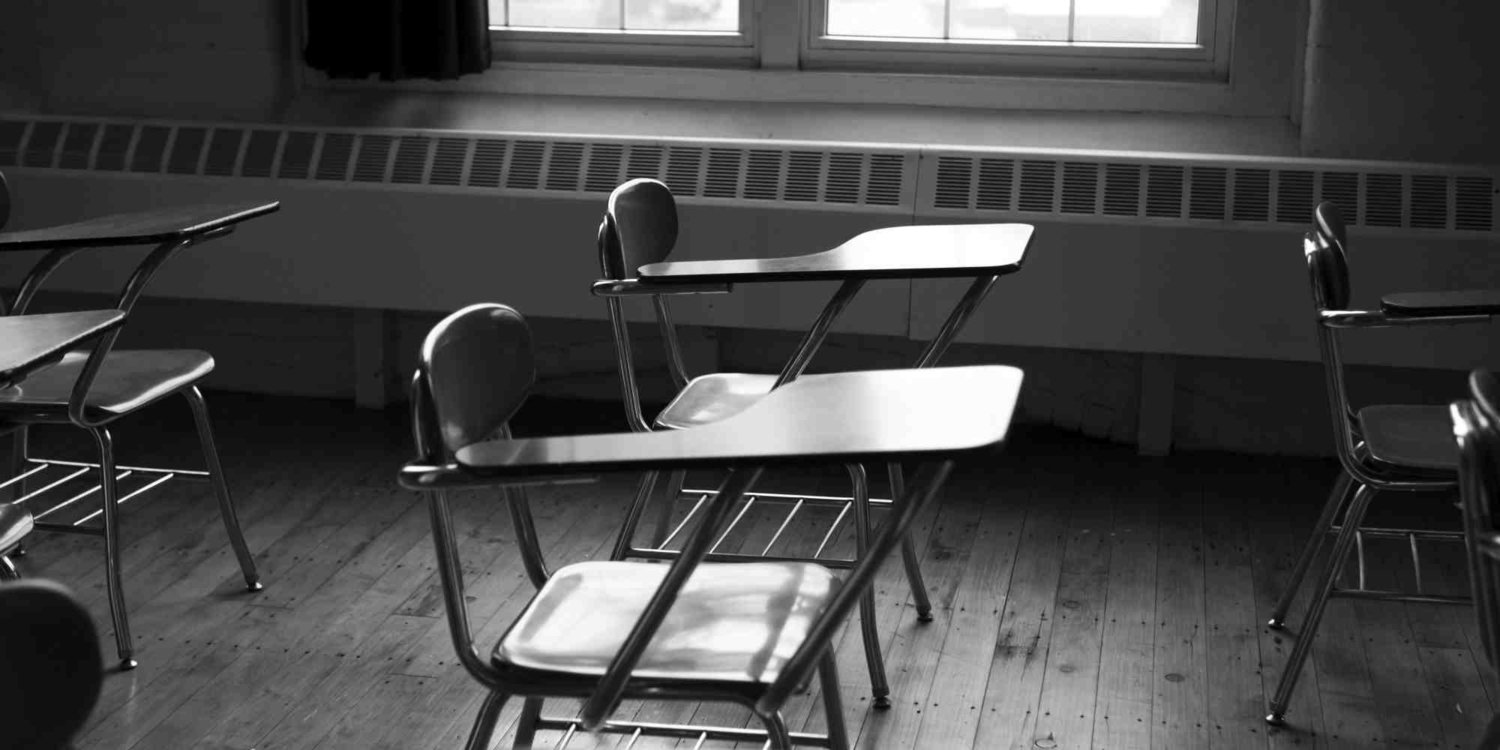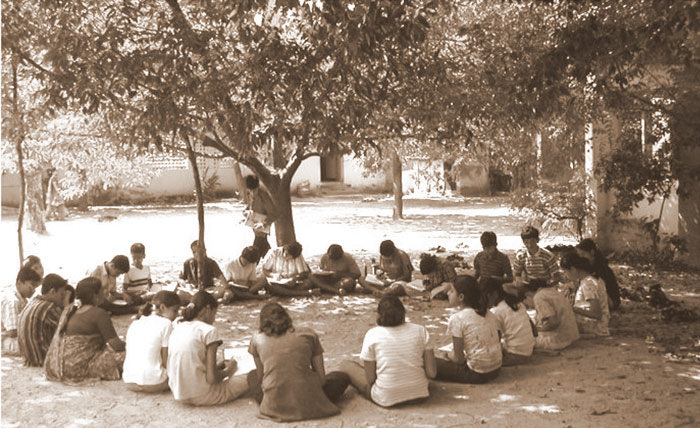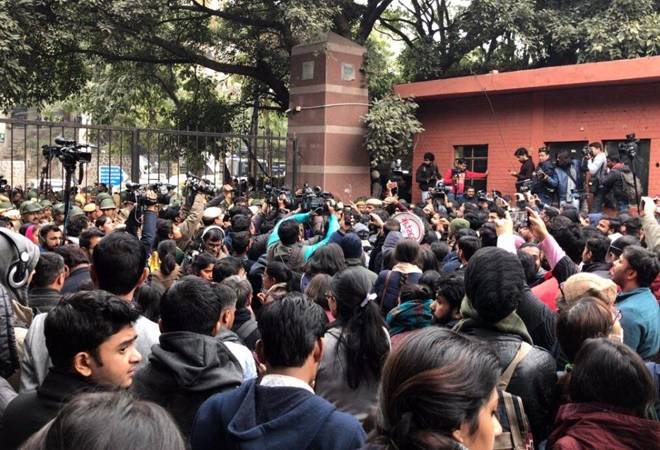In this thought provoking article Professor Avijit Pathak who teaches sociology at JNU has raised a series of critical issues relating to the growing decline in the vibrancy of the classroom interaction in our times.
Prof.Avijit Pathak teaches at the Centre for the Study of Social Systems, Jawaharlal Nehru University, New Delhi.
What sustains me as a teacher is my eagerness to feel the vibrancy of the classroom. Yes, formal academic seminars and conferences or research and publications have tremendous importance in the life of an academic. However, for me, nothing is more joyful than teaching—the dynamics of an interactive classroom and celebration of ideas and dialogues. There is something intimate/real/physical about the classroom. It remains alive with its spontaneity, face-to-face communication, silly mistakes and brilliant insights, and proximity of human souls. I have always believed that a university finds itself in its classrooms, in the constant interplay of students and teachers in a communicative space. Yet, these days I cannot escape an anxiety: Is the culture of the classroom declining? Are students slowly disappearing from this concrete/physical space, and finding a new meaning in the virtual reality—the new world it promises? Or is it that as teachers we are losing interest in the classroom interaction because of our career pressure and altered priorities? I am anxious because I am seeing this change. In my own journey as a teacher I have seen the glorious days of the classroom interaction (foggy winter morning, 9am class, the lecture hall is full); but now, believe me, I feel the absence of that intensity and creative energy. It pains me. However, the question is: why is it so?

Technology, Virtual Intimacy and the New Social
To begin with, let me speak of the process of the reception of knowledge. Do not forget that with information revolution the world has changed dramatically. The teacher with his embodied existence in a physical setting of the classroom is no longer the most revered authority in this knowledge economy. With the spectacular digital media, there is no dearth of information. For instance, you want to know about Marx, and you find yourself amidst the abundance of material because of the magic of Internet. You feel that you no longer need a teacher to have a conversation on capital and commodity fetishism, alienation and estrangement, ideology and class conflict since there are thousands of brief essays and interpretations available. You want to know about Zygmunt Bauman. Why should you come to the classroom? You Tube—yet another techno-miracle—makes it possible for you to watch a series of lectures by Bauman himself. You immediately arrive at a conclusion that your teacher is a lesser mortal than this great social philosopher is, and hence you do not feel like wasting your time in attending the class. Furthermore, if you are overtly ‘political’ with a belief that the classroom is essentially a ‘panoptic’ space that allows the teacher’s ‘gaze’ to objectify, classify and discipline students, you have yet another reason not to attend the class. Possibly, as teachers, we have not yet been able to redefine ourselves in the new reality, and as a result, the possibility of an empty classroom is not far away.
It is also important to reflect on the way the new generation of learners—the children of neo liberal India born with the ethos of consumption and intoxication with the gadgets—approaches the social. A classroom is an intimate social space that demands a sustained interaction between the teacher and the taught, the exchange of ideas among students, the art of listening and shared concern and a high degree of empathy. It is a domain of tangible relationships with all its dynamics—power, conflict, cooperation, responsibility and acknowledgement of the presence of the other. However, this creative social skill, it seems, many of them are losing because of increasing individuation (think of every new piece of technology—smart phone or Walkman or iPod— generating a heightened sense of ‘me’, ‘my space’, ‘my choice’, and thereby reducing the urge to share, negotiate and cooperate with others) and the tendency to escape from the concrete for the sake of ‘virtual intimacy’. Is it that they are more comfortable with brief/bullet point email responses, Facebook shares and instantaneous texting, and as a result, tend to escape from a direct engagement with real people in a real setting because it implies the possibility of being emotionally affected and associated ethical responsibility? As a teacher, I am witnessing how difficult it is for them to do any group project; most of the time, there is no group chemistry; there is no interest in collective learning, and there is no collegiality. Is it that they are so excited with the hyper-real that it does not matter to them even if they miss the joy of sharing the moments of togetherness with their friends and teachers? Is it an absence of warmth in human relationships in an age in which utility (my teacher exists for me merely for a grade or a recommendation letter, and beyond that he or she has no intrinsic value for me; or even my classmate is a stranger I have just happened to discover through an accident) becomes more important than love, care and collective ecstasy?
Can Teachers Reinvent Themselves?
Yet, as an old-fashioned teacher, I would insist that nothing could replace the classroom. Before I dare to convey this message to young learners, I must engage in self-criticism. I do believe that as teachers we have to reinvent ourselves through a creative pedagogy. Yes, there is no dearth of information in the Internet. However, the classroom is not for the dissemination of information. Instead, it ought to be seen as a catalyst, a dialogic space (not necessarily always a ‘panoptic’ space) that inspires young learners to see beyond information, think critically and creatively, and evolve their own distinctive ways of seeing, feeling and theorizing. Moreover, the classroom is an interactive domain. You may watch Michel Foucault on You Tube; but when with twenty more students and an engaged teacher you explore Madness and Civilization, something happens to you. Your body vibrates, your soul dances, you become part of a song. This is what a vibrant classroom does. Furthermore, a good teacher is not a delivery boy who just delivers the capsule of knowledge in sixty minutes. A good teacher radiates the fragrance of human soul and positive energy that no digital technology can emit. Yes, as teachers we have to work on ourselves. But then, without synergy nothing great is possible. That is why, I appeal to young students to look at themselves, ask critical questions and realize that learning is not the reproduction of what is available, knowledge is not merely for power and utility, knowledge is not just information or theoretical sophistication, knowledge without love and wisdom is dangerous, and an alive classroom is truly a secular satsang filled with the ecstasy of a song that everyday teachers and students compose together.
The New Leam has no external source of funding. For retaining its uniqueness, its high quality, its distinctive philosophy we wish to reduce the degree of dependence on corporate funding. We believe that if individuals like you come forward and SUPPORT THIS ENDEAVOR can make the magazine self-reliant in a very innovative way.














